Solving Problems
Troubleshooting
- Cannot Create a Project on the Local Storage
- Cannot Select an Object
- Performance Issues
- Red Circles on the Floor Plan
- The AR Session Failed
- Other Problems
Cannot Create a Project on the Local Storage
The plus button at the top of the document browser may be disabled making it impossible to create a new project. This can take place because the app doesn't have sufficient permissions to store documents on the device.

If you have the Live Home 3D folder, go inside it. This should unlock the plus button.
If you have opened the app for the first time, the folder mentioned above may not exist. In this case, proceed to the following subsections.
Possible Cause
iOS lets you select a storage that an app can use to store user's files. Check the app's settings in the iOS Settings. There can be iCloud Drive selected while you are trying to save on the device.
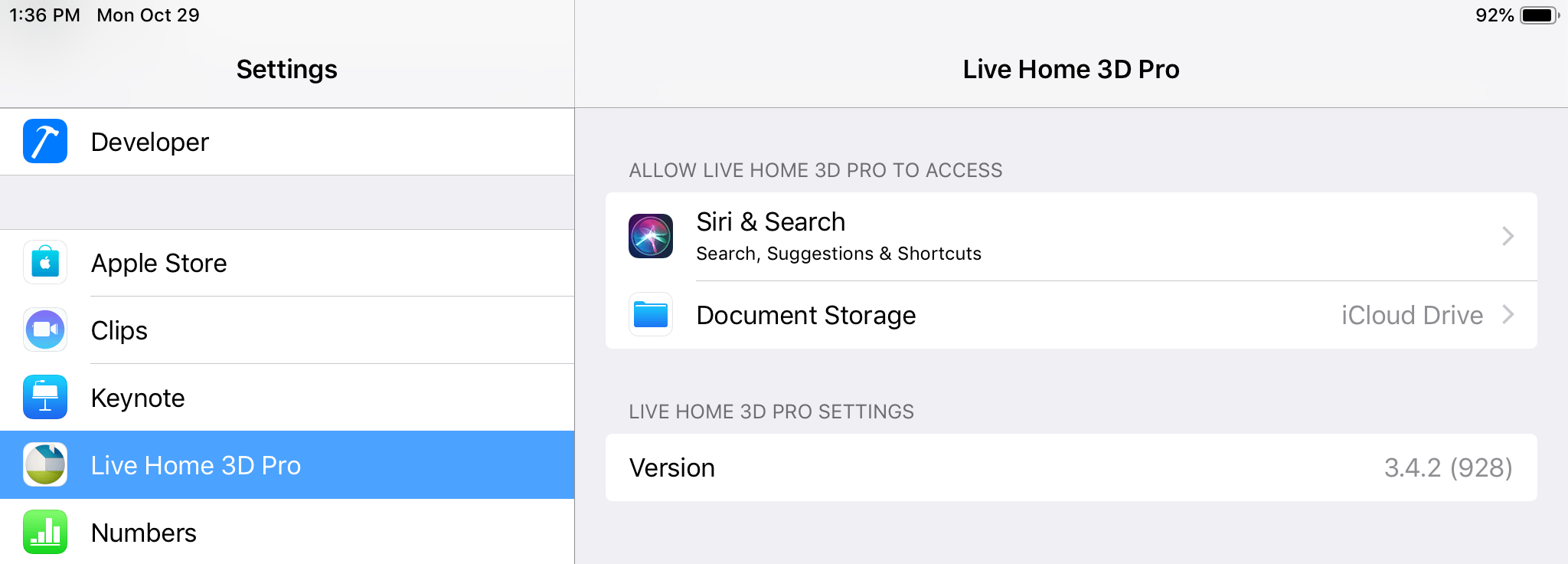
Tap on Document Storage to access the available options.
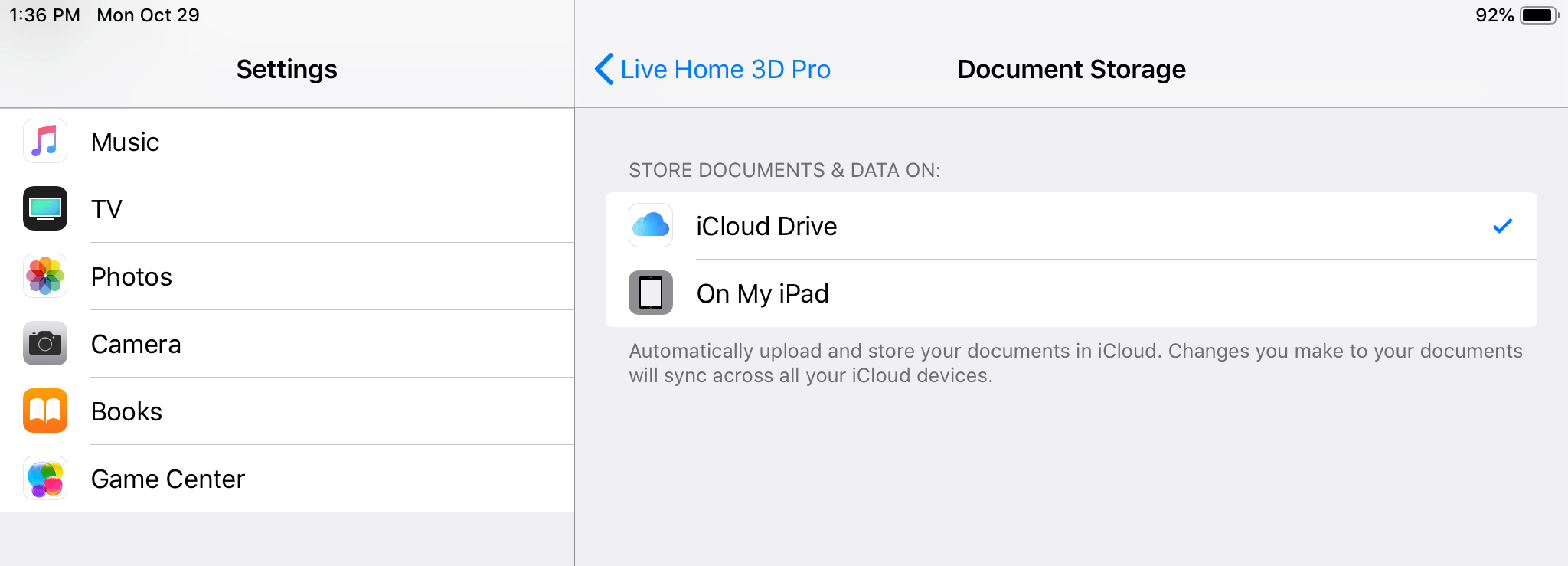
Possible solutions
- Set the Document Storage to On My Device in iOS Settings.
- In the Locations section of Project Gallery (see the first screenshot in this subsection), choose the same location that is selected in the iOS Settings, for example, iCloud Drive.
Cannot Select an Object
The object you cannot select may be locked. Find the object in the Project Tree to verify this.
Performance Issues
The 3D view may respond to your actions with a delay because of the limited performance of your device. The performance problems usually don't affect the 2D Plan view.
To speed up rendering in the 3D view, adjust settings in the 3D section of app's Settings. This involves finding a compromise between the performance and the quality of the 3D picture. To do this:
- Set the Full Scene Anti-Aliasing, Texture Filtering and Reflection Quality parameters to middle or lower values.
- While you are working on the project, turn off the Lighting option in the toolbar of the 3D view.
Note that you can edit your project at lower quality and then set up high quality to export pictures or videos.
While you are editing your project, keep in mind the following:
- Turn off the light sources located outside the room you are working on, and those which aren't critical for the current 3D scene. You can control the light sources in the Light Properties tab of the Inspector.
- Objects shouldn't plunge into the floor, ceiling or walls. To be sure that an object is placed properly, activate the Glue By (appropriate object side) option, and move the object around to let it snap to the floor, ceiling or other nearby surface. Be careful when you change the object's elevation manually.
- Draw the walls carefully. Red circles on the floor plan indicate the places where walls join not neatly. Fix all such issues.
- Don't use too many reflective materials. The app's performance can decline if you apply reflective materials to a large number of small objects.
- Avoid creating many variations of the same object using the Type and Representation dialog (3D properties). The more different objects are present in the project, the longer that rendering takes. The app works faster with a number of copies of the same object rather than with the same number of different objects (of the same complexity). The app uses one pattern object for all its copies in the project. An object, even slightly modified, can be treated as a completely different one.
- Hide those objects that aren't critical for your current work, or those which are invisible from the current point of view. You can use the Project Tree to make objects visible and invisible. For example, if you have several trees outside, hide them while you are editing the interior of the rooms.
- Deactivate the Cast Shadows option in the Inspector when possible. Shadows may not be visible when a flat object is attached to a bigger one (wall picture or area rug), an object is very small (pen on a table), one object is inside of another (books on a bookshelf, or a TV set in a niche), and in other cases.
Avoid using too detailed 3D models. The Type and Representation dialog lets you decrease the object's level of detail.
Red Circles on the Floor Plan
Red circles indicate that walls didn't connect to each other properly in the point where a corner should appear. As a rule, errors of this type are caused by small pieces of wall added unintentionally. Sometimes this can happen when a wall adjoins another wall at a very sharp angle.
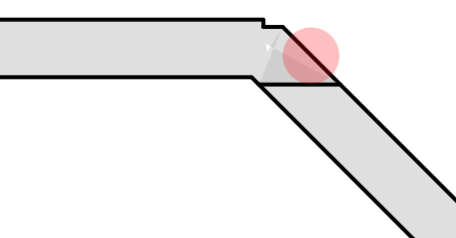
To fix such an error, you should find out how many walls are present near the red circle. The problem may be caused by a very small wall that overlays another wall and hence is not visible very well. Select all walls around the red circle using the selection frame. This will highlight contours of the walls and may make an invisible wall visible. In the image below, a small wall, added by mistake, appears to be present over the corner.
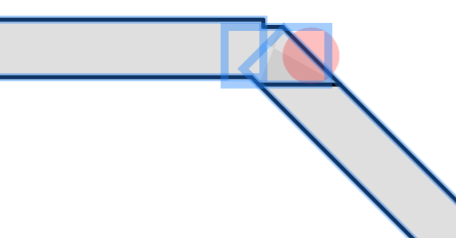
An alternative way is to select walls one after another in the Project Tree and see if the currently selected wall is located near the red circle.
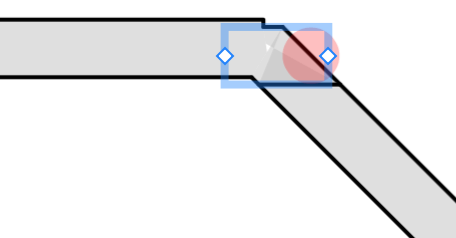
All unintended walls, as one selected in the image above, should be deleted. If the circle remains, then you need to check the rest of the walls near the red circle. Select one and delete it. If the red circle is still there, call Undo and do the same with another wall until the problem is fixed.
The AR Session Failed
The "The AR Session Failed" message may pop up when you are trying to view your project in AR. This can happen if the app is used in the Split mode, sharing the screen with another app.
AR cannot work in the Split mode. Make Live Home 3D take the whole screen and try to view your project in AR again.
Other Problems
If you cannot find a solution to your problem above, contact the BeLight Software support.